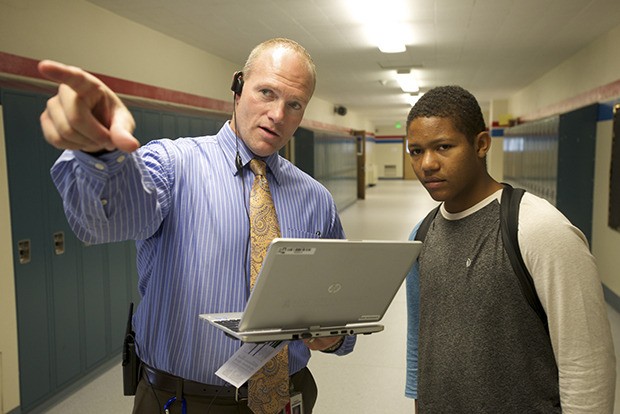With 11 years of principalship at Kent-Meridian High School under his belt, Wade Barringer moved his career forward last year with a superintendent certification program through Seattle University.
“It was a great opportunity. I had the freedom to be involved in a lot of different leadership experiences at a lot of different levels throughout the year,” Barringer said.
It was a serious time commitment for the principal of one of the area’s busiest schools. Barringer said that the year-long course made him much more aware of the high demands of superintendency in a large school district.
One such issue was how a superintendent’s role changes with the size of a school district.
“I think about Dr. (Edward Lee) Vargas and how we have a 28,000-student school district,” Barringer said. “He’s not able to get into all the buildings as much as he’d like to. But if you went to a smaller district, a district with six or seven schools and a few thousand students, you could be in buildings a few times a week,” Barringer explained. “As you get bigger, the expectations are that you have to be more knowledgeable about those outside factors that impact education, and that’s where the political side comes in.”
Much of a superintendent’s time in a large district is consumed with internal and external communication and relation building with outside agencies, which requires meetings with business figures, district officials and state politicians.
“His calendar is just stacked. Just stacked,” Barringer said. “Some meetings take place on campus with various chiefs, some meetings take place outside of campus where he’s got to meet with civic leaders or the mayor or politicians or business leaders.
Barringer spent a large chunk of his time away from the school, shadowing Vargas at events, functions and meetings to understand the different roles the superintendent fills in his work. It was a learning experience, particularly when it came to the time commitments.
“Just the amount of hours I needed to be involved in district types of things: meetings, board meetings, committees. Last year I think I was on seven different committees. I spent probably more than half of my time last year involved in intern related — or district leadership related — types of activities.”
He estimates he spent no less than 400 hours outside of his regular principal’s duties on the internship. Just a few of the committees he was a part of ranged from district level such as KEA union negotiations to state level School Improvement Plan Peer Reviews.
Another lesson Barringer came away with was the importance of looking at things from a larger picture and perspective, and thinking how a policy made for a small system might impact larger systems that it connects to.
“If you’re in a big district, you’re not really at the ground level, really know what’s going on at the buildings,” Barringer said. “You really are at a 30,000-foot level, and you have to have knowledge of the potential impact of outside factors, whether they be legislative or economic.”
The time commitments certainly took their toll on Barringer’s principalship and his family life.
“It was a sacrificial year,” he said. “My family was sacrificed and my health and working out habits were sacrificed and I think, to some degree, part of my influence as a leader not being here had an impact as well.”
Barringer said that he isn’t considering a superintendency but a high-level administrative role (assistant superintendent or executive director). He is considering moving away from Kent-Meridian if the job requires it, but he says he would prefer to stay in the KSD.
“This is where my family is, and I’ve been here for 11 years at K-M,” he said. “My heart and my drive and my ability to impact a community can go anywhere.”
Talk to us
Please share your story tips by emailing editor@kentreporter.com.
To share your opinion for publication, submit a letter through our website https://www.kentreporter.com/submit-letter/. Include your name, address and daytime phone number. (We’ll only publish your name and hometown.) Please keep letters to 300 words or less.

